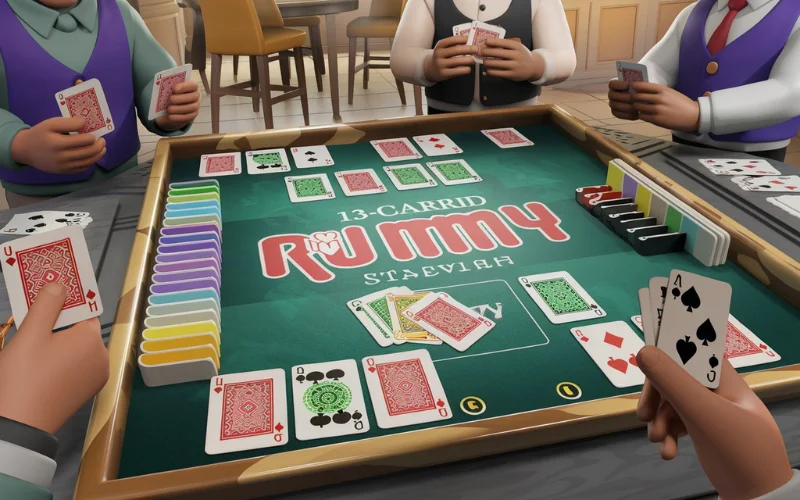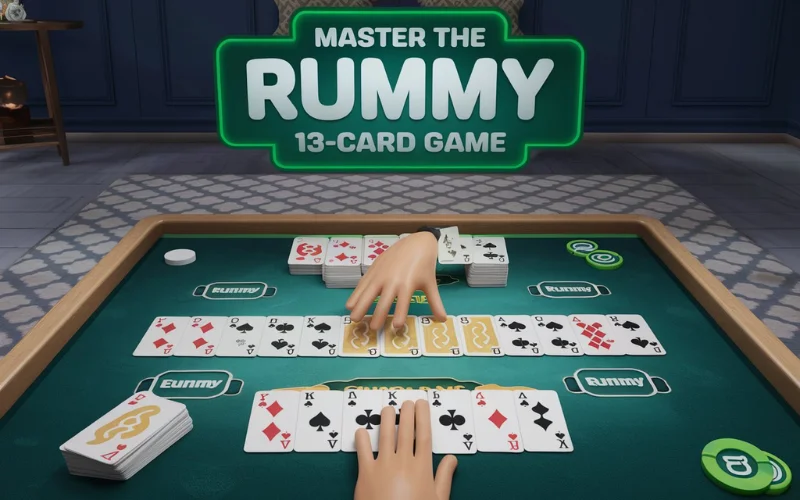Rummy is a game that has captured the hearts of millions across India. With the perfect mix of strategy, skill, and luck, it’s no wonder that rummy has become a staple in Indian households and online gaming platforms alike. But before you jump into the action, it’s essential to understand the rummy rules for the 13 card game. With the right foundation and a few key tricks, you’ll be ready to tackle any game on KhelPlay or any other platform with confidence!
In this guide, we’ll take you through the fundamentals of rummy rules for the 13 card, offering tips and strategies to help you improve your game. Whether you’re a beginner or someone looking to up their game, this article is packed with everything you need to know.
Understanding the Basics of Rummy
Rummy is a card game that revolves around forming sets and sequences from a hand of rummy rules for the 13 card. The game is both thrilling and strategic, demanding careful planning and observation. Players use these combinations to either win quickly or reduce their points, based on the game format.
Rummy rules for the 13 card
In the rummy rules for the 13 card variant of rummy, each player is dealt rummy rules for the 13 card. The main objective? To arrange all your cards into valid combinations, known as sequences or sets. However, the twist lies in the rules and strategies that make this game unique and enjoyable.
Objective of the Game
The primary aim in rummy rules for the 13 card is to form at least two sequences, one of which must be a pure sequence (a sequence without a joker). If you manage to do this and arrange the remaining cards into valid sequences or sets, you can declare victory.
CLAIM YOUR ₹8,888 WELCOME BONUS TODAY!
Card Distribution and Setup
Each player receives rummy rules for the 13 cards at the start of the game, which are randomly dealt by the dealer. The remaining cards form a closed deck from which players draw cards on their turns. There’s also an open deck, where discarded cards are placed for players to pick up if they choose.
Types of Melds: Sequences and Sets
- Sequence: A sequence is a combination of three or more consecutive cards of the same suit. Example: 5, 6, 7 of Hearts.
- Set: A set consists of three or four cards of the same rank but different suits. Example: 9 of Hearts, 9 of Spades, 9 of Diamonds.
Pure Sequence vs. Impure Sequence
A pure sequence has no jokers. For example, 4, 5, 6 of Spades is a pure sequence. An impure sequence includes a joker, such as 7 of Hearts, 8 of Hearts, and Joker.
Joker Cards and Their Uses
Jokers play an essential role in the rummy rules for the 13 card, as they can replace any card in a sequence or set, helping players complete combinations quickly. However, they can’t be used in a pure sequence. There are two types of jokers:
- Printed Jokers: These are the two joker cards in every deck.
- Wildcard Jokers: A card randomly picked at the start of each game, which acts as a joker for that specific game.
How to Make a Valid Declaration
A valid declaration is made when you arrange all rummy rules for the 13 card into valid sets and sequences, fulfilling the mandatory requirement of having at least two sequences, one of which is pure. Incorrect declarations will lead to a penalty, so check and double-check your combinations!

Scoring in rummy rules for the 13 card
Scoring in rummy is straightforward. Each card holds specific points, with numbered cards retaining their face value and face cards (King, Queen, Jack, Ace) valued at 10 points each. After a valid declaration is made, players with incomplete hands add up their points, which count against them.
Tips and Tricks to Win Rummy
Want to gain an edge in rummy rules for the 13 card? Here are some tips to help you improve your game:
- Prioritize the Pure Sequence: Since it’s a must for a valid declaration, try forming a pure sequence early in the game.
- Keep an Eye on Opponents: Observe the cards they pick or discard, as this can give you clues about their hand.
- Use Jokers Wisely: Don’t waste jokers on sequences that could be completed without them; instead, save them for sets or impure sequences.
Common Mistakes to Avoid
- Overvaluing High-Point Cards: Holding on to high cards like Kings and Aces can be risky. If they don’t fit into a sequence or set, discard them early to avoid penalties.
- Ignoring the Opponent’s Moves: Many beginners focus solely on their hand, missing crucial cues from the opponent’s actions.
Advanced Strategies for Players
- Bluffing with Discards: Discard cards strategically to mislead your opponents. For instance, discarding a 5 might suggest you’re not close to completing a sequence around it, even if you are.
- Balancing Risk with High Cards: While discarding high cards can save points, holding on to one or two can occasionally pay off if you’re close to completing a set.
Online Rummy on KhelPlay
KhelPlay is an exciting platform for online rummy lovers. It offers a user-friendly interface and lets players engage in real-time matches with others from across India. KhelPlay’s platform ensures fair gameplay with random shuffling and certified algorithms.
Why KhelPlay?
Playing on KhelPlay gives you the advantage of accessibility, security, and an opportunity to compete with skilled players. It’s ideal for players seeking serious, competitive rummy games and those looking to learn and improve.
Conclusion
Mastering the rummy rules for the 13 card game requires understanding the basics, practicing, and gradually developing a strategy. Rummy is more than just luck—it’s about thinking ahead, reading your opponents, and knowing when to play it safe or take risks. With this guide, you’re well-equipped to join the online rummy world, particularly on platforms like KhelPlay, where every game brings new excitement.
You can also check out Yono All App, another platform where you can play rummy games in India.
